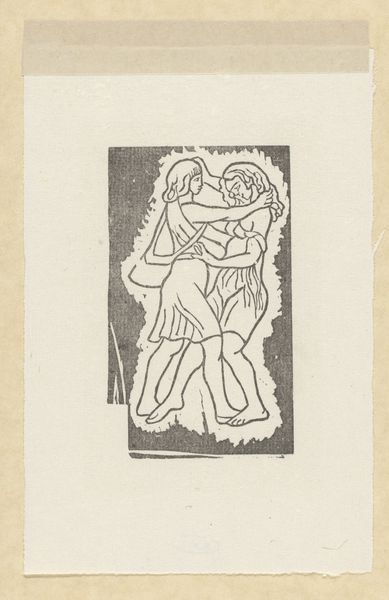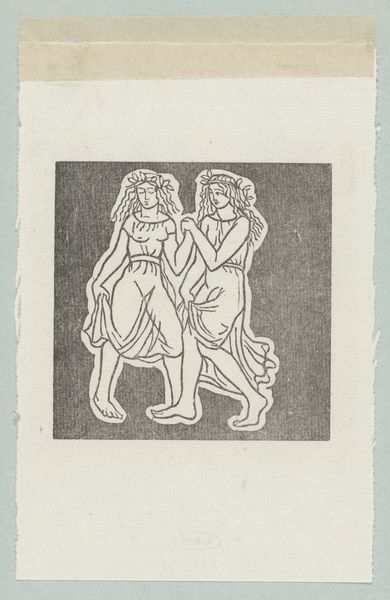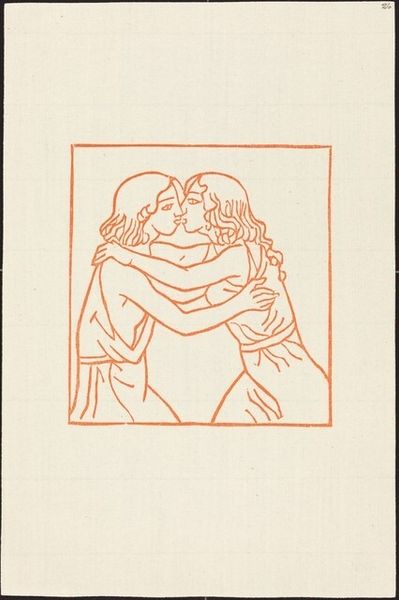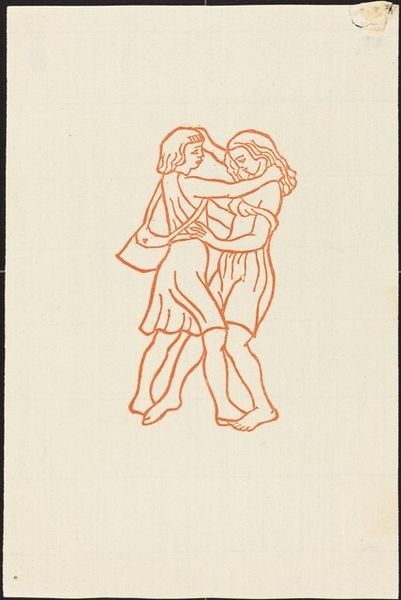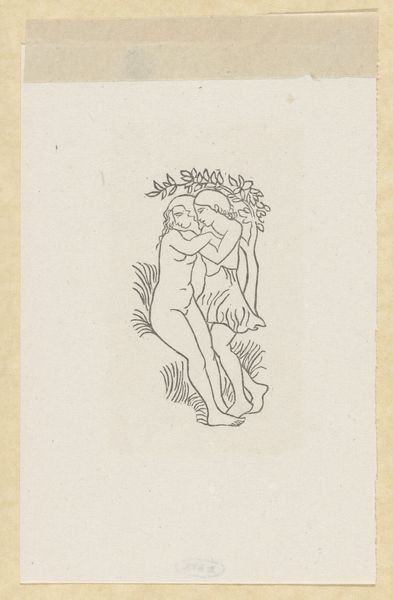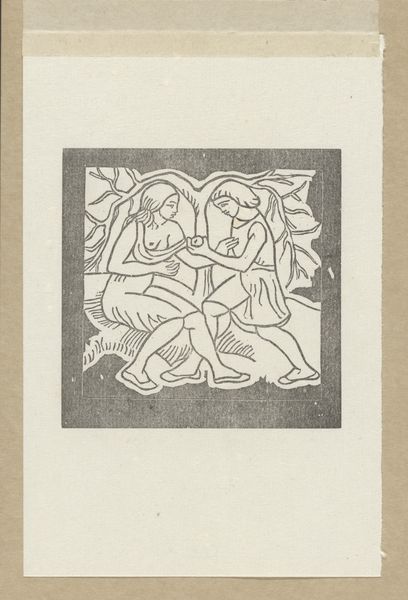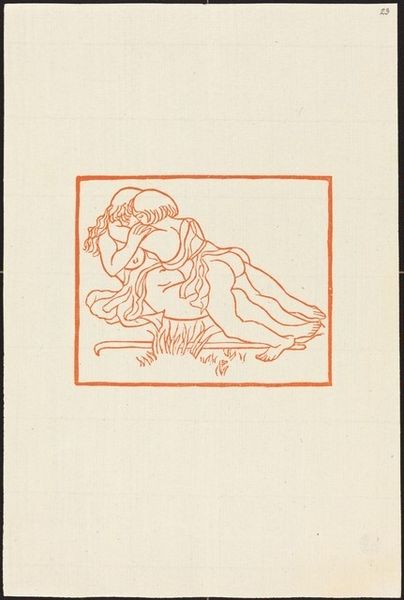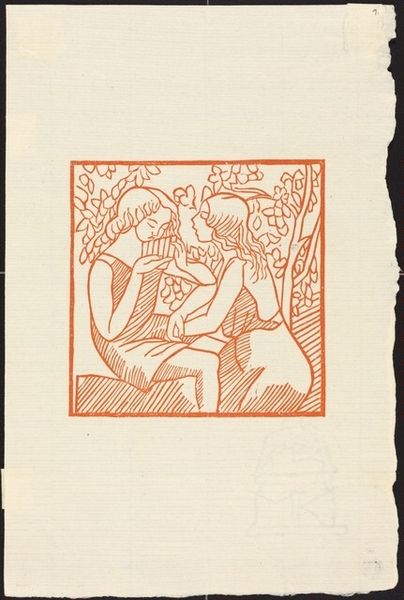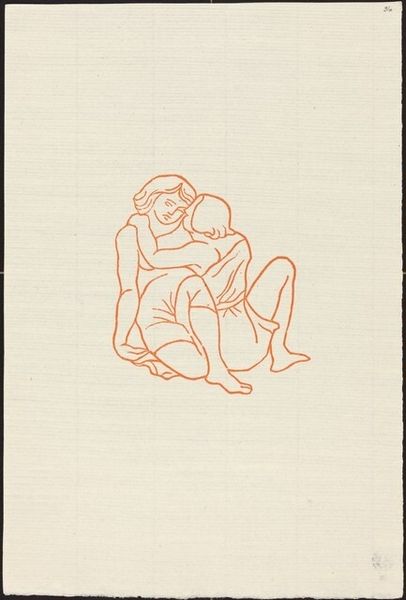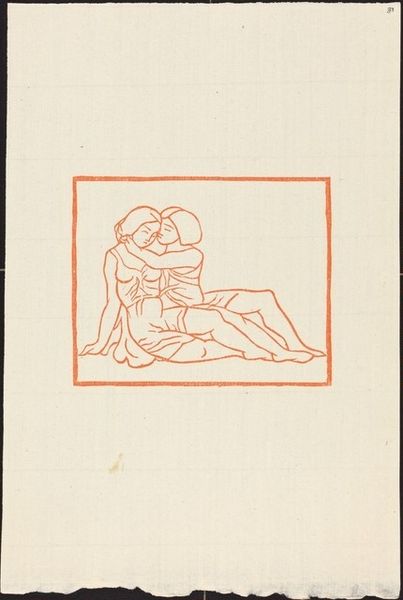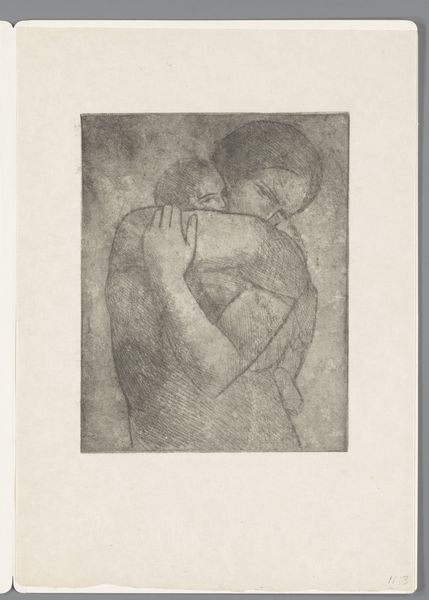
Daphnis en Chloë hervinden elkaar na de gevangenschap van Chloë 1937
0:00
0:00
aristidemaillol
Rijksmuseum
drawing, print, intaglio, woodcut
#
drawing
# print
#
intaglio
#
figuration
#
woodcut
#
line
#
erotic-art
Dimensions: height 198 mm, width 131 mm
Copyright: Rijks Museum: Open Domain
Curator: Before us is Aristide Maillol’s 1937 woodcut entitled “Daphnis en Chloë hervinden elkaar na de gevangenschap van Chloë,” a work held here at the Rijksmuseum. It depicts, as the title suggests, Daphnis and Chloë reuniting. Editor: My immediate response is to the graphic boldness of this print. The stark contrast between the figures and the dark background concentrates all attention on their embrace. The line work is simple, direct, and powerful. Curator: It’s fascinating to consider this within the context of the time. Maillol, though rooted in classicism, was working when abstraction was ascendant. He chose to illustrate Longus's pastoral romance in a rather straightforward representational mode, steeped in eroticism, turning his back on non-figuration. Editor: Exactly. Note how Maillol pares everything down to its essence, particularly in how he outlines their forms. The curves of their bodies create a rhythmic harmony that speaks directly to sensuality and an emotional connection devoid of sentimentality. This avoidance is where its power truly resides. Curator: We can also read this reunion as a larger allegory, post-World War One. The pastoral genre often served as a retreat into idyllic simplicity during times of complex socio-political turmoil, almost as wish fulfillment of reunification. It suggests not only a return to normalcy, but also a deeper desire for harmony and rebirth amidst social devastation. Editor: Absolutely, and yet the technical simplicity adds a dimension, doesn't it? Maillol’s technique is so efficient; look at the precision he achieved with such limited resources. He really knew his tools and process inside out. In a way the medium embodies their honest physical love as well. Curator: True. What's compelling is that although he worked on the cusp of modernism, Maillol was in essence reinforcing fundamental humanist ideas and creating accessible, universal images that resonate with basic human experiences such as love, loss, and ultimately reunion. Editor: For me, this work serves as a striking example of formalism wherein stark aesthetics are not merely decorative; rather, they augment a piece which so candidly projects and reflects love. The graphic economy reinforces the honesty, leaving a lasting impression of powerful connection.
Comments
No comments
Be the first to comment and join the conversation on the ultimate creative platform.
